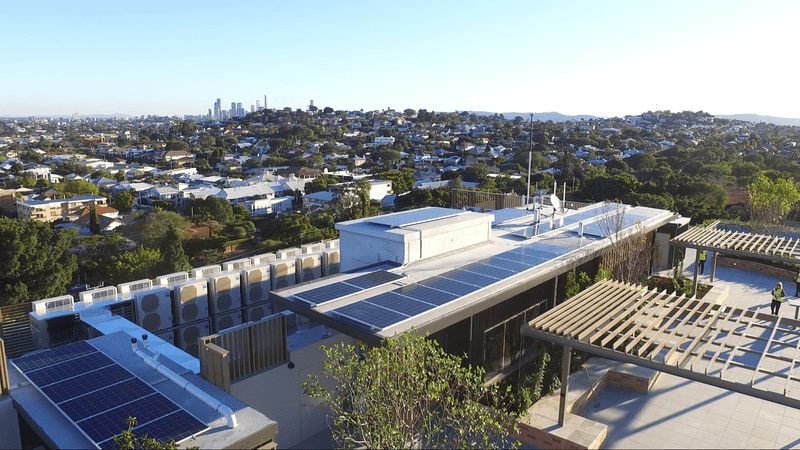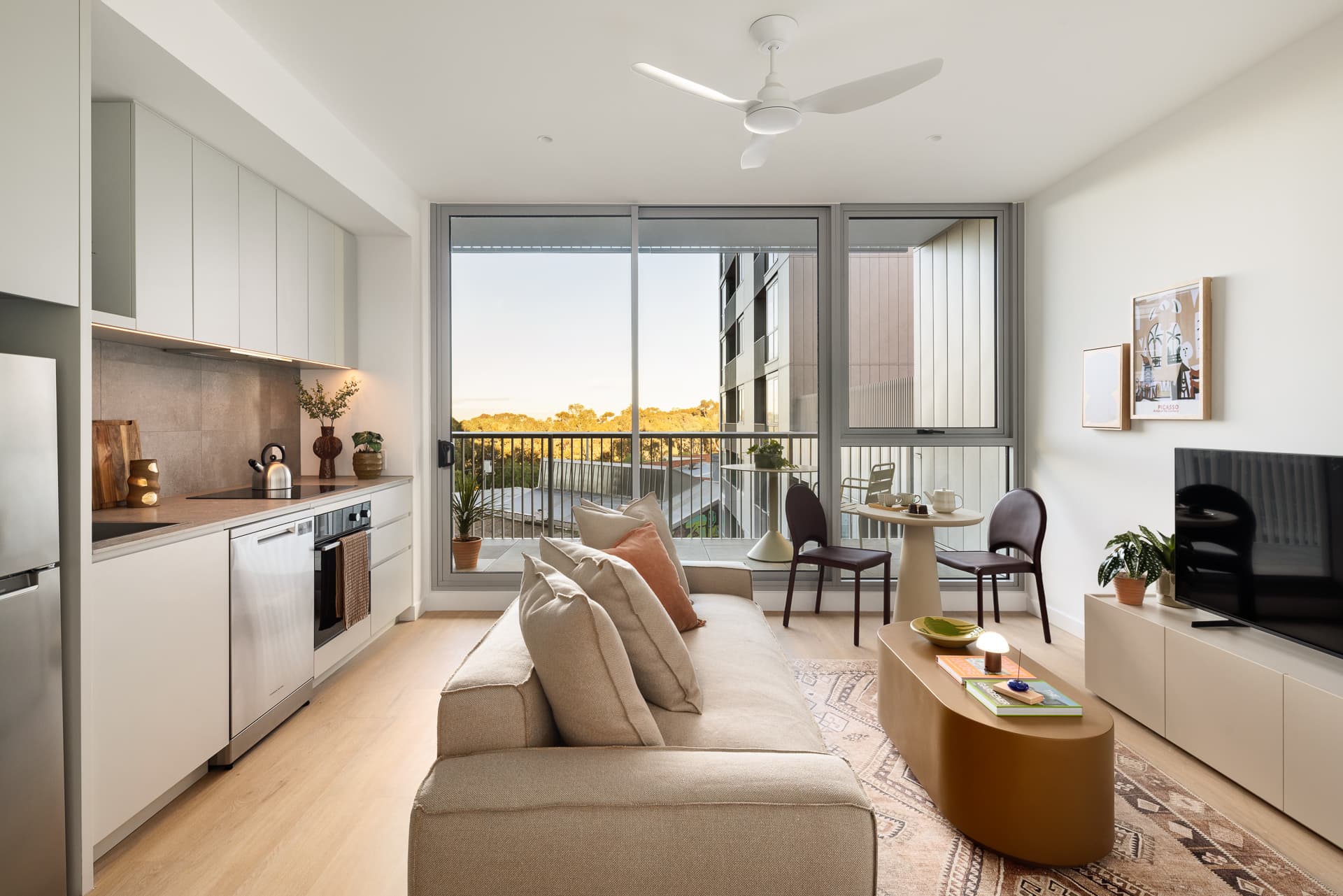Sustainability and social responsibility
As a developer, we have the ability to significantly influence the behaviours of those who live in our communities. From a sustainability perspective, we've been doing some exciting work at Mirvac to address how we source energy better, reduce what we consume and manage waste more responsibly.
For us at Mirvac, leaving a positive legacy is what drives us. We have a responsibility as a business to do this, not just for ourselves but on behalf of those who inhabit the communities we help create.
From a sustainability perspective, we’ve been doing some exciting work at Mirvac to address three important issues:
- How do we source our energy better?
- How do we reduce what we consume?
- How do we responsibly manage our post-consumption waste?
How do we source our energy better?
As a developer, we have the ability to significantly influence the behaviours of those who live in our communities; sustainability-conscious decisions made up-front pay dividends for the lifetime of a property and the people who will inhabit it. When you consider how long our developments last, we’re making decisions on behalf of generations to come. Good and sustainable design is the best legacy we can create.
With apartment living continuing to increase across the country, more Australians are also typically denied the opportunity to take advantage of solar energy. It’s quite the challenge to put solar panels on the roof if you don’t own that space as you otherwise would in a home or townhouse. As a developer, we need to make the responsible decision at the outset to maximise renewable energy in a way that can directly benefit residents. Take, for example, Brisbane’s Ascot Green project where we are installing solar panels and batteries on the nine-storey Ascot House building which will directly connect to individual apartments – driving their energy costs down by as much as 70 per cent. We are also partnering with the Clean Energy Finance to roll out solar at over 300 homes in our future masterplanned communities, at no extra cost to the customer. We recognise that through better design, we can provide our customers with more energy efficient solutions.
How do we reduce what we consume?
Retrofitting sustainability measures in the home is often cost-prohibitive, so making sustainability decisions up front often has the added benefit of ongoing affordability for buyers and can help to address mounting concerns around rising energy prices. In Melbourne, our House with No Bills study is offering the Zimmerman family the opportunity to live in our home designed for energy efficiency. In return, we will monitor their habits and identify how we can maximise the impact of design and smart technology to deliver energy efficient homes in the future.
Employing new technology, such a prefabricated panels and modular bathrooms, is also helping us to reduce our construction waste. In fact, in using prefabrication technology we’ve been able to reduce our on-site waste by approximately 40 per cent. Not only is this good for the environment, it’s good for our business too, helping us to save on landfill tax with the added benefit of providing a safer work environment for our people. It’s also a positive step towards our Group target to send zero waste to landfill by 2030.
How do we responsibly manage our post-consumption waste?
The ongoing environmental efficiency of the homes we build is just one part of the equation. In Australia, the residential and commercial building sectors produce 23 per cent of the national greenhouse emissions. While much of this stems from sourced-materials and their supply chains, it doesn’t lessen our responsibility and ability to make an important impact. Our Tullamore development was among the first developments in Australia to be awarded a Six Leaf Sustainability rating from the Urban Development Institute of Australia and recognises a range of material, energy, water and waste reduction measures. These include the capture, treatment, and reuse of stormwater, retention of existing vegetation, provision for recycled water and much more.
The sustainability measures we make are integral to our business and how we do things. Our ambitious sustainability strategy This Changes Everything outlines that as a business we have a responsibility to do all that we can in our work, but also in our own backyard.
The Green Building Council of Australia proposed that if Australia is to meet its Paris Agreement climate change targets, all new buildings in the country must be emissions-neutral by 2030, while existing buildings must do so by 2050. Mirvac aims to be net-positive by 2030. Our aim is that our new and existing buildings will generate more water and energy than they consume, and send zero waste to landfill. We know these are tough sustainability goals to reach, but we also have a strong history of meeting our targets. We set the goal of installing one megawatt of renewable energy by 2018 recognising this is an important part of our journey to being net positive. Following the launch of Mirvac Energy our first megawatt of renewable energy was installed across Orion Springfield Central near Brisbane, and the second at One Darling Island in Sydney.
Reimagining a sustainable future
As one of the country’s leading residential developers we have an obligation to those who work, play, shop and live in Australian communities. We know that for sustainability to be fully maximised within an organisation it must be central to any business strategy, as it is to ours.

Mirvac acknowledges Aboriginal and Torres Strait Islander peoples as the Traditional Owners of the lands and waters of Australia, and we offer our respect to their Elders past and present.
Artwork: ‘Reimagining Country’, created by Riki Salam (Mualgal, Kaurareg, Kuku Yalanji) of We are 27 Creative.


